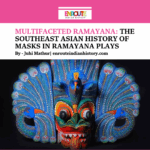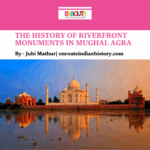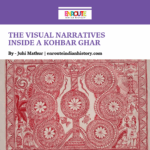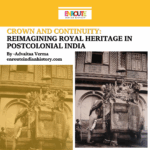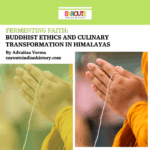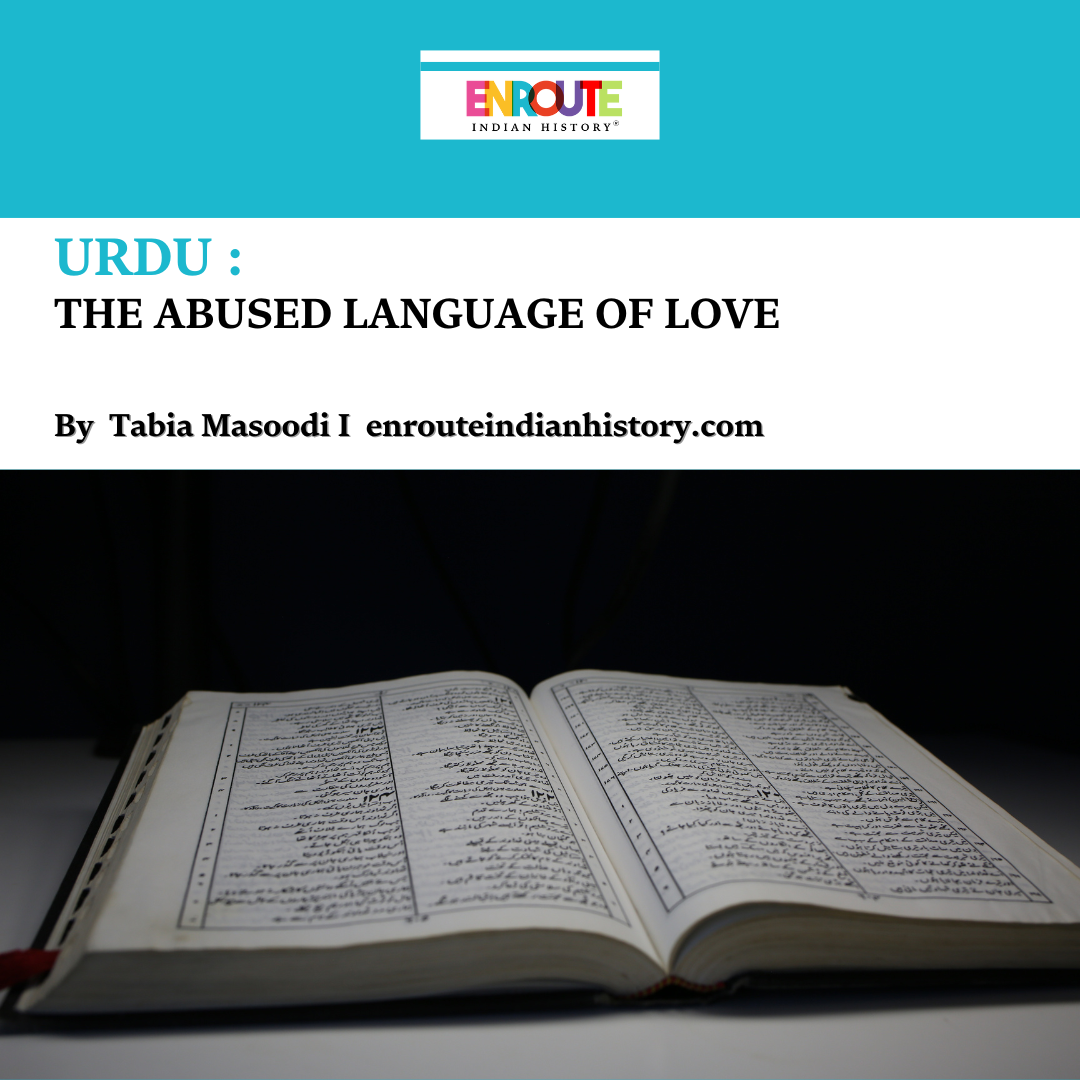
By Tabia Masoodi
Khusro Nizam ke bal bal jāiye, Hindvi mohi bhāve (Khusro, I would sacrifice myself for Nizamuddin Auliya, and I love the Hindavi [Urdu] language). These are the famous couplets of Amir Khusru, a force that led to the emergence of Urdu and a torch that illuminated the path of the Urdu language. This language's beauty, simplicity and poetry have made people fall in love with it. The same aesthetic force of the language has led to its bastardisation and appropriation, especially by today's generation.
ORIGIN OF URDU
Urdu's roots trace back to the 12th century Delhi Sultanate and belong to the Indo-Aryan language within the Indo-European family of languages. It originated from the Indian subcontinent, primarily Delhi, from the interaction of Kaiboli, an early form of Hindi, and Persian, Arabic and Turkish due to Cultural exchanges and Islamic conquest. It was earlier called as Hindvi, Zaban-e-Hind, Hindi, Zaban-e-Delhi, Rekhta, Gujari, Dakkhani, Zaban-e- Urdu-e-Mualla, Zaban-e-Urd, until 1780 when Ghulam Hamadani Mushafi, an 18th century Urdu gazal poet, first used the word Urdu. It translates to the language of the camp(Lashkari zaban) in Turkish. Mir Amman, a translator and writer, in his book Bagh o Bahar, published
in 1801, claimed that the language originated in the Mughal military camps, and soldiers speaking Persian, Arabic, Turkish, and local Indian dialects developed a common language to communicate. Hence the name language of the camp. However, the theory has been rendered null and void now as scholars like Dr Mohiuddin Qadri Zor, Prof. Mirza Khalil Ahmed Baig, and G.A. Grierson have concluded that the language naturally evolved over centuries through cultural exchange and the influence of several languages over one another(Parekh and Shahzar). Urdu significantly evolved during the Mughal era as Mughal emperor Bahadur Shah Zafar, a poet himself, promoted Urdu in his court.
Urdu was propagated by Amir Khusrau, a 13th-century Sufi poet who is regarded as its father and the first major poet of Urdu. He wrote in Hindavi, the precursor of Urdu, by fusing Persian, Arabic, and regional Indian languages. His writings, including Khaliq Bari and Hindavi poetry, laid the groundwork for Urdu's growth as a literary language.
URDU'S CONNECTION TO HINDI
Despite being influenced by Arabic and Persian, Urdu is an Indo-Aryan language similar to Hindi that originated and flourished in the Indian subcontinent. Hindi and Urdu share the same Indic foundation and are both part of the new Indo-Aryan language within the Indo- European family languages. They share a common grammar, syntax, and a significant portion of their vocabulary, making them mutually intelligible in colloquial speech. However, they diverge in script and formal vocabulary as both have extensively taken from different sources: Hindi from Sanskrit and Urdu from Arabic and Persian. The most distinctive feature is that of the script. Hindi uses the Devanagari script, while Urdu uses a modified form of the
Perso-Arabic script called Nastaliq(Rahman, T,2011).
Till the 19th century, Hindi and Urdu were collectively called as Hindustani. However, the rise of Hindu-Muslim tension furthered by colonial influence not only led to the division of people, but Hindustani was also divided into Hindi and Urdu. The former being identified with Hindus and the latter with Muslims(Bilal,2021).
LITERARY HISTORY
Urdu literature is a literary tradition that has flourished in the Indian subcontinent for centuries. Rooted in the Persian and Turkish languages, Urdu emerged as a distinct literary language during the Delhi Sultanate and reached its pinnacle under the Mughal Empire. The Bahmani kingdom in Deccan significantly helped in popularising Urdu in the Southern part of India. Poetry laid the foundation of Urdu's literary tradition with genres like the Ghazals, Qasida and Masnavi, written and flourishing from the 13th century, earlier in oral traditions. While Amir Khuarau remains the most influential figure in the emergence of Urdu and its literature, other key figures like Bande Nawaz, Sultan Quli Qutb Shah and Fakir Deen
Nizami influenced the early literary landscape. Nizami's Masnavi Kadam Rao Padam Rao is considered the earlier literary work in Urdu, written between 1421 and 1434 in Deccan, that marks Urdu's transition into a literary language. Before manoeuvring into artistic forms, Urdu was largely used for religious and Sufi writings in the 14th century. Sufi saints and Scholars in the Deccan used Urdu to make their teachings accessible to the masses.
While poetry is the heart of literature due to its ability to emote complex feelings, prose is the backbone of the literature that provides details, structure and clarity. Till the early 17th century, poetry ruled Urdu literature; the culture of prose started in 1635 with Mulla Asadullah Wajhi's Sabras being the first prose of Urdu literature. The 18th and 19th centuries are considered the golden period of Urdu. The language reached its zenith, especially poetry. The likes of Mirza Ghalib emerged out of these centuries, who added to the richness of the language. The Mughal Empire also played a pivotal role in nurturing and furthering Urdu literature. Mughal courts allowed poets to thrive and experiment with the new genres that led to literary diversity.
THE AESTHETICS OF URDU
Urdu is a language of love, poetry and aesthetics that lies in its rich linguistic culture and heritage, such as ghazals, nazms and marsiya, as well as cultural practices like mushaira(poetic gathering), which have contributed to the beauty of Urdu. The script of Urdu enhances the visual appeal of the language as it is written in the form of Persian calligraphy. Urdu is inherently lyrical because of its phonetics – soft consonants and long vowels give it a rhythmic melody. The poetic appeal, usage of flowery language, formality, politeness(adab) and rhythmic patterns lend a charm to the language. The language takes its formality and glory from Persian and Arabic and its intimacy from Sanskirt-derived colloquial terms, allowing it to flow with emotions and grace. The use of figurative language and extensive use of Persian-derived metaphors and idioms evoke vivid imagery that appeals to emotional depth.
Sufi mysticism has deeply influenced Urdu literature. Sufi poets used Urdu to explore spiritual themes with symbolic language that resonates universally. This mystical dimension adds another layer of beauty to the language. Another layer of beauty that Urdu possesses is romanticism. Central to Urdu romanticism is the idea of love and separation. For ages, the concept of love and separation has held an immense beauty as well as curiosity, and Urdu has been able to capture the emotion in all its depth. Urdu is credited with the ability to express the seven stages of love. Urdu holds a special place in the hearts of young and old alike. However, its appeal and beauty have also led people to use it without a proper understanding of its depth and heritage, resulting in its appropriation.
APPROPRIATION OF URDU
Urdu as a language has been quite rich in its cultural and linguistic heritage and has been faced with a lot of challenges over time in its interactions with new generations. However, Gen Z has brought many transformations to the language itself. Being born into a hyper- digitalized and globalized world, people have made many significant changes in linguistics practices, and Urdu is no exception to that. Gen Z's introduction to the world of Urdu is mainly through popular culture with a pseudo-representation and misplaced understanding. The world of social media has reduced Urdu to captions to enhance the aesthetic appeal of their posts to gain likes and comments or pasted on t-shirts and bags to look intellectual and artistic. However, in reality, Urdu as a language is nowhere, neither in its literary tradition nor in its impact on society and culture. All that is left is the aestheticization on the surface level without having a deep-rooted knowledge of the beauty of the language or its proper pronunciation and script.
The popularisation of Roman Urdu by Gen Z in modern communication, particularly in digital spaces, poses a threat of cultural erosion as the Nastaliq script is instrumental to the Urdu language. Roman Urdu takes away the charm and rich linguistics of the language as it reduces the language to a simplified form and dilutes it. Roman Urdu erodes the identity of Urdu's script. The big corporations commodify Urdu to increase the aesthetic of their products but give little credit to its script, even sometimes to its transliteration. In 2021, FabIndia used Roman Urdu to name their Diwali campaign as Jashn-e-riwaaz, however, the word riwaaz is not correct. Riwaaaj is the correct term. This is yet another form of linguistic
appropriation, where priority is given to globalized convenience rather than to understanding the language and, most importantly, its script.
The inclusion of Urdu in pop culture for its poetic elegance has led to its global appropriation, as its essence is often diluted and commodified. In the cinemas of the Asian subcontinent, Urdu has always been central. With a refined vocabulary, Urdu is often used to emphasize romance and evoke sophistication. But in modern times, Urdu is only being used selectively for aesthetic effects. Urdu has always been appropriated for its poetic charm, such as for fulfilling the requirements of wider masses, but the complexity of Urdu is reduced in all this. This reduction only results in the lack of depth of classical literature and poetry (Kishore,2023).
Urdu is the seventh most spoken language in India, with around 5.07 crore people speaking the language. The usage of Urdu in pop culture, movies, music and TV series and Gen Z's aesthetic version of language may create an impression that the language is not declining, however, the reality is different. In 2019, Punjab University proposed to merge the Urdu department with the School of Foreign Languages. The proposal tells a larger story of how Urdu is not given enough credit in public affairs. Another example of how Urdu is not given a space in official matters is that of the NEET fiasco of 2017; the entrance exam was conducted in ten languages, and Urdu was not one of them. The prominent and historic Urdu bazaars, such as Delhi's Urdu Bazar, are in shambles and dying (Irfan,2021).
The preservation of this rich language that once crowned India's linguistic heritage needs a focus that should not be only on its beauty of literature but also needs to be seen as a language of education, empowerment and means of survival. The most crucial factor in the survival of Urdu is the preservation of its script. A language cannot survive without its script, merely on its beauty and aesthetics.
Bibliography
Rahman, T. (2011) From Hindi to Urdu: A Social and Political History. Karachi: Oxford University Press & Delhi: Orient Blackswan.
Dehlavi, Syed Ahmad, et al. “A Historical Perspective of Urdu.” National Council for Promotion of Urdu Language, https://www.urducouncil.nic.in/council/a-historical-perspective-of-urdu.
Parekh, Rauf, and Eric Shahzar. “Urdu's origin: it's not a 'camp language' – Newspaper – DAWN.COM.” Dawn, 17 December 2011, https://www.dawn.com/news/681263/urdusorigin-its-not-a-camp-language. Accessed 1 March 2025.
Bilal, Maaz Bin. “Till the late 19th century, people were hardly aware of Urdu and Hindi as being two distinct languages.” The Hindu, 5 November 2021,
https://www.thehindu.com/society/hindustani-we-spoke-how-urdu-and-hindi-evolved-from-a-common-language/article37337191.
Irfan, Hanan. The Burden of Urdu Must Be Shared, 15 July 2021,
https://livewire.thewire.in/livewire/the-burden-of-urdu-must-be-shared/. Accessed 3 March 2025.
“Urdu | Asian Languages & Literature | University of Washington.” Asian Languages & Literature, https://asian.washington.edu/fields/urdu. Accessed 3 March 2025.
Kishore, Munshi Nawal. “DEVELOPMENT OF URDU LANGUAGE AND LITERATURE IN SUB-CONTINENT AND ITS IMPACTS ON SOCIETY.” PalArch, https://archives.palarch.nl/index.php/jae/article/download/11782/10392/23300.


